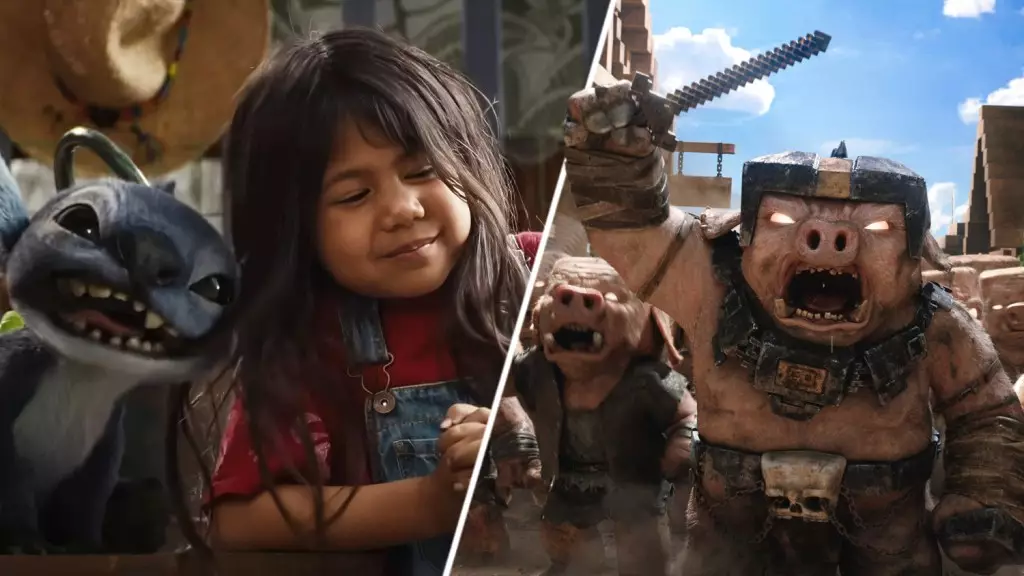In a shifting movie industry where fresh concepts often struggle to gain traction, nostalgia has emerged as a formidable force driving box office success. Disney’s latest incarnation of *Lilo & Stitch* exemplifies this phenomenon brilliantly, outperforming expectations and reshaping how studios approach franchise development. The film, now in its sixth week, continues to defy the typical decline experienced by recent releases, firmly establishing itself as a dominant player. Its overwhelming international presence and sustained domestic performance underscore a pivotal trend: audiences, especially women, find comfort and joy in revisiting beloved characters, fostering remarkable staying power for nostalgic properties.
This trend holds significant implications for Hollywood. The reliance on established IP—particularly those with a dedicated fan base—can sometimes be dismissed as creatively bankrupt. However, *Lilo & Stitch* demonstrates that thoughtfully reimagined nostalgia can lead to substantial financial gains while also tapping into deep emotional reservoirs. The film’s ability to rise above newer, digitally-driven entries suggests a shift in consumer preferences, favoring familiarity and sentimentality in turbulent times.
Market Dynamics and the Reign of Blockbuster Nostalgia
The global box office landscape is currently witnessing a notable pivot towards properties that evoke childhood memories and cultural touchstones. The success of *Lilo & Stitch*, alongside *A Minecraft Movie*, which has soared past $950 million worldwide, illustrates the substantial appetite for family-friendly, nostalgic content. Both films are exception, not the norm, as they dramatically outperform many other recent releases, many of which have struggled amid post-pandemic recovery and ongoing industry strikes.
Particularly striking is the international appeal of *Lilo & Stitch*, which dominates key markets such as Mexico, France, Brazil, and several Latin American countries—regions where the film now ranks among the highest grossing titles of 2025. This widespread success demonstrates the universal language of nostalgia and how it transcends cultural boundaries. Disney’s strategic targeting of these markets with culturally resonant properties pays off remarkably, reinforcing the importance of localized storytelling within global franchise plans.
Moreover, the astounding box office figures—over $182 million domestically during its opening—a record that surpasses even *Top Gun: Maverick*’s Memorial Day debut—highlight how integrating nostalgia can generate record-breaking openings. Such figures suggest that audiences are eager to reconnect with familiar characters and stories, especially when given high-quality, modern interpretations. Disney’s investments into these properties are evidently lucrative, with the franchise’s retail sales soaring from $200 million in 2019 to over $2.6 billion in 2024, confirming that nostalgia-driven content isn’t just a box office phenomenon but also a lucrative merchandising endeavor.
Nostalgia’s Role in Shaping Future Industry Strategies
This revival of beloved properties signals a clear lesson for Hollywood: classic IP remains a rich vein of revenue, especially when presented with contemporary production values. Disney’s approach with *Lilo & Stitch* showcases a calculated risk that has paid off, hinting that studios should double down on carefully selected franchises with proven audience appeal. In an era of financial uncertainty and audience diversification, nostalgia offers a cost-effective and relatively low-risk path to profitability.
Furthermore, the sustained interest in characters like Stitch, who now surpass $2.6 billion in retail sales, underscores the potential for long-term brand extension. The franchise’s commitment to multiplatform presence—across streaming, merchandise, and theatrical releases—demonstrates that nostalgia is not merely a fleeting trend but a sustainable business model. It also hints at a cultural shift recognizing that fans of all ages seek meaningful connections with stories from their childhoods, revitalized with modern storytelling techniques.
*Lilo & Stitch*’s extraordinary success is more than a box office anomaly; it’s a harbinger of a stronger, nostalgia-fueled future for Hollywood. As studios embrace this trend, the focus will undoubtedly shift towards reimagining classic properties that resonate emotionally across generations, ensuring their relevance and profitability in a fiercely competitive and uncertain global market.
